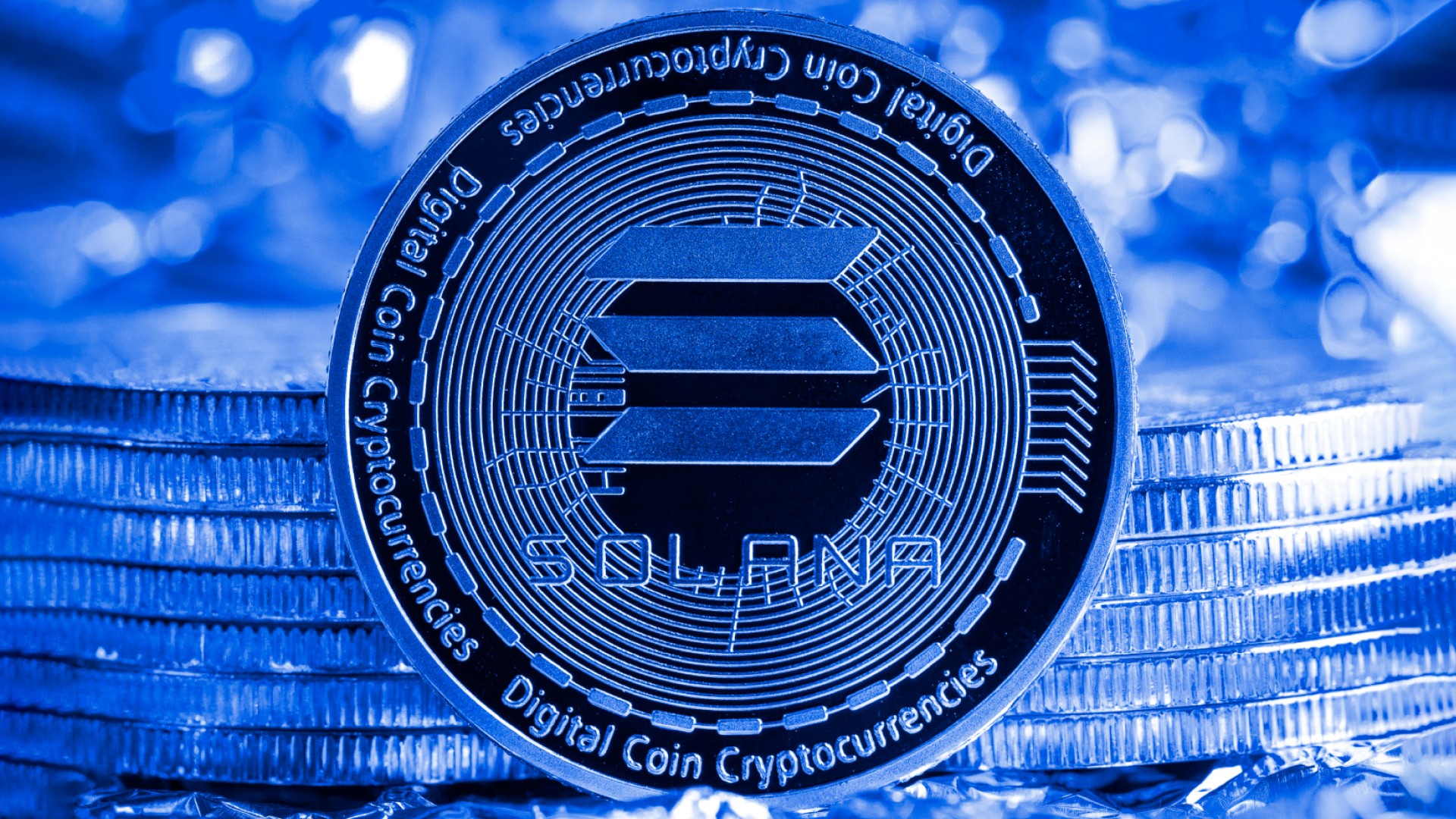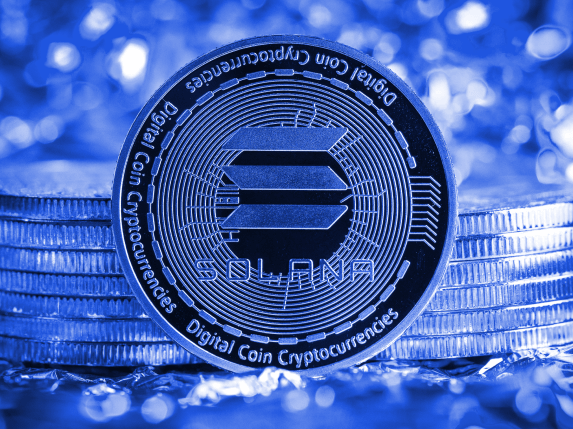What is Solana epoch 370 ?
Solana epoch 370 refers to a specific block height or slot number within the Solana blockchain at that time. However, this changes with time.

It’s important to note that the specific details and characteristics of a given epoch, such as the number of transactions processed and the validators who participated in the consensus during that epoch, can vary widely depending on a variety of factors.
| Epoch | 370 |
|---|---|
| Previous Epoch | 369 |
| Next Epoch | 371 |
| First Slot | 159,840,000 |
| Last Slot | 160,271,999 |
| First Block Timestamp | Nov 7, 2022 at 19:11:55 UTC |
| First Block | 159,840,001 |
| Last Block | 160,271,999 |
| Last Block Timestamp | Nov 10, 2022 at 08:33:16 UTC |
Why is Solana epoch 370 significant?
Solana’s Epoch 370 was significant because validators unlocked over 47 million SOL tokens during this period. An epoch in Solana is when validators cannot unlock their staked tokens on the network. The unlocking of such a massive amount of tokens came at a time of substantial market turmoil, not just for Solana but for the entire crypto market, following the collapse of FTX.
After Epoch 370 expired, validators withdrew their unstaked SOL tokens. However, it was uncertain if the validators would sell their withdrawn SOL tokens, considering the then-current price performance of the token. At the time, Solana’s native coin had plunged nearly 40% in the last 24 hours and was trading under the $20 mark. This massive price decline could be tied to the ongoing FTX and Alameda saga. Solana’s nosedive was particularly notable due to its connection to Alameda.
Why should you use Solana; Benefits of Solana?
Solana is a high-performance blockchain platform that uses a unique consensus mechanism called Proof of History (PoH) to achieve high scalability and transaction throughput. Here are some of the benefits of using Solana:
- High transaction throughput: Solana is designed to process a large number of transactions per second, with the capability to handle up to 65,000 transactions per second. This makes it ideal for applications that require high-speed and high-volume transactions.
- Low transaction fees: Due to its high throughput capabilities, Solana is able to process transactions more efficiently and at a lower cost compared to other blockchain networks. This makes it an attractive option for developers who want to build decentralized applications without the high cost of transaction fees.
- Scalability: Solana’s unique consensus mechanism, Proof of History (PoH), allows it to handle large-scale applications with ease. PoH enables Solana to process transactions in parallel and maintain the integrity of the network. This makes Solana a highly scalable platform that can support a wide range of applications.
- Decentralization: Solana is a decentralized platform, which means that it is not controlled by any single entity or authority. This makes it more secure and resistant to censorship compared to centralized platforms.
- Developer-friendly: Solana is designed to be developer-friendly, with a range of developer tools and resources available to make it easy to build and deploy decentralized applications. The platform also supports multiple programming languages, including Rust, C++, and JavaScript, which makes it accessible to a wider range of developers.
Solana Blockchain Explorer
Solana has several blockchain explorers that allow users to search and view information on the Solana blockchain. Here are a few popular Solana blockchain explorers:
- Solscan: Solscan is the official Solana blockchain explorer, developed by the Solana team. It allows users to search and view information on Solana transactions, blocks, and accounts, as well as other blockchain data.
- Solana Explorer: Solana Explorer is another popular blockchain explorer that allows users to search and view information on the Solana blockchain. It includes features such as block and transaction history, account information, and real-time updates.
- Solana Beach: Solana Beach is a blockchain explorer and analytics platform that provides a wide range of data and insights on the Solana network. It includes features such as transaction history, network stats, and analytics tools for developers.
- Solflare: Solflare is a web-based wallet and blockchain explorer for the Solana network. It allows users to send and receive SOL and other tokens and view transaction history and account balances.
These are just a few examples of the many Solana blockchain explorers that are available. Each explorer has its own unique features and user interface, so you may want to try out a few different options to see which one works best for you. Overall, blockchain explorers are essential tools for anyone looking to interact with the Solana network and explore its rich ecosystem of applications and services.
How long is the Solana validator epoch?
Solana’s validator epoch is currently 5 days. This means that validator nodes on the Solana network must produce and validate blocks for a period of 5 days before the next epoch begins. During this time, validators are responsible for verifying transactions and adding new blocks to the blockchain. Validators who successfully complete an epoch are eligible to receive rewards in the form of SOL, the native cryptocurrency of the Solana network.
The Solana community can adjust the length of an epoch through a governance process, enabling token holders to vote on proposals impacting the network’s protocol and parameters. However, since the Solana mainnet launch in 2020, the current 5-day epoch has remained unchanged, and no one anticipates it changing in the near future.
It’s worth noting that the length of the epoch can affect the network’s overall performance, as a longer epoch can lead to slower block processing times, while a shorter epoch can increase the likelihood of forks and other network issues. Solana’s 5-day epoch strikes a balance between performance and stability, allowing the network to handle a high volume of transactions while maintaining its security and reliability.
People who use Solana: Who is Solana for?
Solana is used by a diverse range of individuals and organizations, including developers, investors, traders, and businesses. Here are some of the key groups of people who use Solana:
- Developers: Solana is a popular platform for building decentralized applications (dApps) due to its high throughput, low transaction fees, and developer-friendly features. Developers can use Solana to create a wide range of applications, from decentralized finance (DeFi) platforms to gaming applications and more.
- Investors: Solana’s native cryptocurrency, SOL, has become increasingly popular among cryptocurrency investors due to its strong performance and potential for growth. Investors can buy and hold SOL as a long-term investment or trade it on cryptocurrency exchanges to take advantage of price fluctuations.
- Traders: Solana’s high throughput and low transaction fees also make it attractive for cryptocurrency traders, who can use the platform to quickly and easily buy and sell cryptocurrencies without incurring high fees or slow transaction times.
- Businesses: Solana is also being used by businesses and enterprises looking to integrate blockchain technology into their operations. The platform’s high scalability and low transaction fees make it an attractive option for businesses that need to process a large number of transactions quickly and efficiently.
Overall, Solana has gained a significant following among developers, investors, traders, and businesses due to its high performance, low fees, and potential for innovation. As the platform continues to grow and evolve, it is likely that we will see even more people from a variety of industries and backgrounds begin to use Solana for their blockchain needs.
How many slots does Solana epoch have?
Solana’s epoch consists of a fixed number of slots, with each slot lasting 400 milliseconds. The existing number of slots in each Solana epoch is 432,000. Consequently, each epoch lasts for about 5 days (432,000 slots x 400 milliseconds per slot = 172,800 seconds or 2.0 days), since slots process transactions, validate blocks, and carry out other network functions.
-
Each slot lasts: 400 milliseconds
-
Number of slots in each Solana epoch: 432,000
-
Epoch duration: approximately 5 days
-
Slot calculation: 432,000 slots x 400 milliseconds per slot = 172,800 seconds or 2.0 days
The number of slots in each epoch is not expected to change significantly, as it is an important parameter that affects the network’s overall performance and stability. However, Solana’s community governance process allows token holders to vote on proposals that could potentially affect the network’s parameters, including the number of slots in each epoch.
It’s worth noting that the number of slots in each epoch is related to the network’s transaction throughput, as each slot can process a certain number of transactions. Solana’s current slot capacity is around 200 transactions per second (TPS), but the network has the potential to scale to a much higher TPS in the future as it continues to grow and evolve.
How do I track my SOL transaction?
If you have sent or received SOL, you can track your transaction using a blockchain explorer. A blockchain explorer is a tool that allows you to view and search transaction data on a blockchain.
Here’s how to track your SOL transaction using Solana’s official blockchain explorer, Solscan:
- Go to the scanner in your web browser.
- In the search bar at the top of the page, enter the transaction ID (also known as a hash) of the transaction you want to track. You can find the transaction ID in your wallet or transaction history.
- Click the search button or press enter. Solscan will display the transaction details, including the sender and recipient addresses, transaction status, and other relevant information.
- You can also view the transaction details in real-time as it is being confirmed on the blockchain by refreshing the page periodically.
If you cannot find your transaction ID or it does not appear in Solscan, the transaction might not have been processed yet. In that situation, you might need to wait several minutes or longer for the blockchain to confirm the transaction before the explorer displays it.
It’s also worth noting that there are other blockchain explorers and tools available that you can use to track your SOL transactions, such as Solflare, Solana Beach, and Solana Explorer. These tools may have slightly different user interfaces and features, so you may want to try a few different options to see which one you prefer.
Conclusion
In conclusion, Solana is a high-performance blockchain platform that offers several advantages over other blockchain networks. It uses a unique combination of technologies to achieve fast transaction processing, high throughput, and low transaction fees. Its innovative approach to consensus, combined with its ability to scale, has made it an attractive option for developers and businesses looking to build decentralized applications and services.
As Solana continues to grow and evolve, it’s clear that it has the potential to become a major player in the blockchain space. Its focus on performance, security, and usability, combined with its active and supportive community, make it a promising option for anyone looking to participate in the decentralized economy.
For more online resources and information on how cryptocurrency work, especially how the TET token works, Tectum has a number of resources on YouTube.

